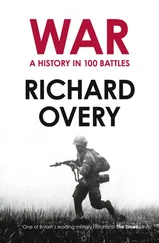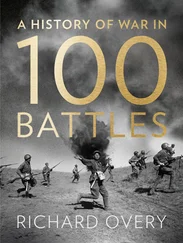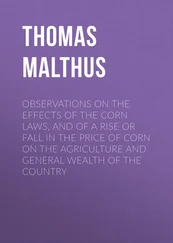Once the wavering mass sees itself in a struggle against too many enemies, objectivity will put in an appearance, throwing open the question whether all others are really wrong and only their own people or their own movement are in the right.
And this brings about the first paralysis of their own power. Hence a multiplicity of different adversaries must always be combined so that in the eyes of the masses of one’s own supporters the struggle is directed against only one enemy. This strengthens their faith in their own right and enhances their bitterness against those who attack it.’ 17
Morale, will and unity had failed in this war; in the next, it would not be Germany who cracked. The Jews would make a wonderfully convenient focus for the enhancement of bitterness, would easily become the ‘one enemy’ that even the ‘wavering masses’ could identify; that 12,000 Jews died for their country – Germany – between 1914 and 1918; that the German-Jewish community contained an intellectual elite that would be a source of strength to any nation, or that it would be a gift of great value to Germany’s enemies, Hitler ignored – the Jews would be the central enemy, the common thread which would run through his propaganda. They were too unifying a target to resist. Hitler’s hatred for the Jews was probably sincere, and this no doubt aided the process of demonisation.
The soldiers returned to starvation (the British blockade did not end until peace was signed) and intermittent civil war – although some German prisoners of war continued to trickle back until as late as May 1920. 18Discipline, especially behind the lines, had now broken down. Army property – horses and vehicles – was ‘sold for a few Marks, a loaf of bread, or some cigarettes’… and 1,895,092 rifles, 8452 machine guns and 400 mortars were held illegally in 1920, according to a German government calculation. 19These would be found by vengeful hands. Friedrich Ebert, the new leader and eventual president, with the disintegration and chaos of Russia before his eyes, formed an agreement with General Wilhelm Groener, the new army commander, to suppress the spate of revolts. In that purpose they were assisted by the Freikorps, unofficial groups of ex-soldiers and students: 20
‘There were plenty of ex-officers and ex-regular NCOs eager to continue the fight in a different form, who gladly accepted responsibility and immediately undertook the creation of volunteer units of all kinds and strengths. The government provided inducements such as special rates of pay and rations. Most of these units took the names of their founders and leaders. In other cases a regiment, while retaining its number, was simply called “a regiment of volunteers”. Still other regiments were left on a mobile footing to defend the frontiers in the east and were then, or later, turned into volunteer formations. It was not long before they became fighting bodies worthy of respect.’ 21
Together, the army and the Freikorps repressed the spartacist revolt in Berlin, the Freikorps shooting the leaders, Karl Liebknecht and Rosa Luxemburg, out of hand. In March 1920 the Freikorps suppressed the ‘Red Ruhr Army’ (after having supported a failed right wing putsch in Berlin a month before – the Kapp Putsch) and in May 1921 they fought a successful, but unofficial, battle with Poland over Silesia. 22The Freikorps were employed by the army as a militia to supplement their own inadequate professional force on the borders of the Reich, as well as to imprint the army’s view on internal politics. An illustration of the loyalties of the Freikorps may be found in the history of No. 19, Trench Mortar Company; reinforced by some men from the No. 2 Naval Brigade (the Erhardt brigade), it was inaugurated on August 3rd 1921 as an ‘iron organisation’ to serve the Nazi party. They were known as the stormtroopers, the sturmabteilung, or S.A., after the crack troops who had led the 1918 offensives.
When, as a result of allied pressure, the Freikorps were disbanded, their members nursed a bitter hatred of the Republic, which, they felt, had betrayed them. They did not all disband. On some large estates they were employed as labour organisations by day, while the hours of darkness saw them training and gun-running. The corps of Rossbach, one among many filled with similar bitterness, may serve as another example of the nature of these troops; the following brief history was compiled by British military intelligence:
‘Early in 1919 this Freikorps was absorbed into the provincial Reichswehr, but on (the) signing of the Treaty (of Versailles) in June, Rossbach tore off his badges, designed a new flag for his Corps and had his men swear allegiance away from the Reich to himself. Ignoring the orders of the government and von Seekt, the Corps marched to Riga to join the “iron division” fighting to retain the Baltic provinces. It was however forced to withdraw in conformity with the remainder of the troops there, and Rossbach with his fifteen hundred men returned to Germany where he was charged with desertion … But Rossbach refused to submit to disbandment and instead offered his services by press advertisement to any individual that would use it for “a national interest”. Soon after, the corps was subsidised by the promoters of the Kapp Putsch in which it took part, and after its failure it, like all the others involved, was for a second time ordered to disband, but it again refused, and, assisted by the Pommersche Landbund (League of Pomeranian Landowners) it set up as a “Worker’s Community”. Its arms which had been left behind after the Kapp Putsch were forwarded to it, consigned as “component parts”.
Reinforced to four thousand men of all arms, the Rossbach corps mobilised in 48 hours and joined other insurgents to fight the Polish insurgents in Upper Silesia during the disturbances which had just broken out there in the spring of 1921. But on the signing of an armistice, the corps was ordered to hand over its arms to the Allied Disarmament Commission in the Plebiscite area and to demobilise. Instead it escaped back to Pomerania and resumed its role as “Worker’s Community”; its arms, which had been hidden in farms and houses in Upper Silesia, followed. Shortly after all such workers’ organisations were prohibited in Prussia by virtue of the Treaty, and a decree was also published once more ordering the dissolution of the “Illegal Freikorps” throughout the Reich. Rossbach now blossomed out as a “Mutual Savings Association”, with his men “on leave” and dispersed in formed bodies on estates, but with a central office in Berlin. When this organisation was in turn forbidden, Rossbach changed his command into an “Agricultural Workers Union”, only to be declared illegal a week later. However he boasted that he could found organisations more quickly than the authorities could suppress them. A little later Rossbach entered the Nazi Party and became its delegate in Mecklenburg where he organised semi – military physical training societies. Arrested a second time, he was nevertheless able to get to Munich and take part in the Putsch of 9 thNovember 1923. After its failure he sought refuge in Vienna, and many of his Corps became party members.’ 23
During the disorders in Berlin, Ebert’s government had been forced to quit the city for Weimar, some 150 miles away, and the German republic of 1918–1933 has ever after been known to history as the ‘Weimar Republic’. This republic, powerless since the armistice, had now to bear the burden of the Treaty of Versailles which the victorious allies imposed upon it. The American President Wilson’s idealistic 14 points, which the hapless Germans had presumed would form the basis of the treaty, were brushed aside as far as Germany was concerned, and the disarmed republic had now to accept the cup of humiliation and defeat. There were no negotiations. Alsace Lorraine was returned to France, and German minorities in the East were to be ruled by the newly independent Czechs, Poles and Lithuanians. The fleet was lost, the army reduced to 100,000 men. The Rhineland was ‘demilitarised’, heavy artillery and military aeroplanes were forbidden. Of her arable land 15% and of her iron ore deposits 75%, were gone, her steel capacity was reduced by 38%, pig iron by 44%, coal by 18%. She was branded with the guilt of the war. As reparation, she was forced to pay to the victorious allies 132 billion gold marks, equivalent in 1918 rates to some 33 billion dollars. In addition, the war had cost the Germans some 150 billion reichsmarks, nearly all of it borrowed. 24
Читать дальше
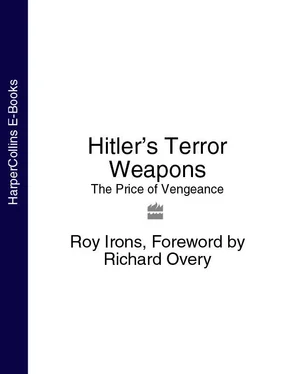
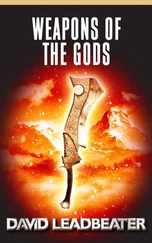
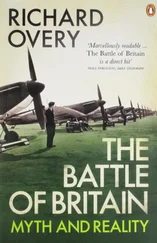

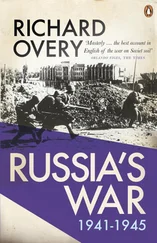
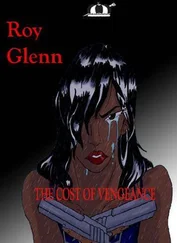
![Traudl Junge - Hitler's Last Secretary - A Firsthand Account of Life with Hitler [aka Until the Final Hour]](/books/416681/traudl-junge-hitler-s-last-secretary-a-firsthand-thumb.webp)


